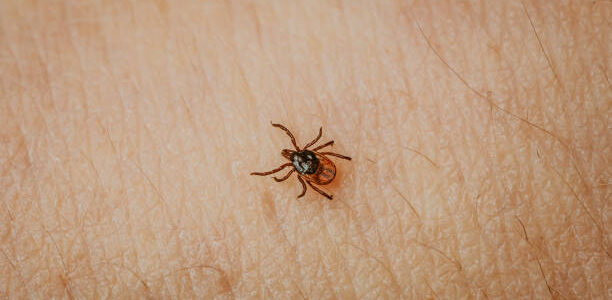People Across Forth Valley Urged to Be Tick Aware When Enjoying the Outdoors This Summer
A new campaign has launched to raise awareness of tick bites and the symptoms of Lyme disease in a bid to encourage people to take precautions this summer.
With a new survey revealing over half of people in Scotland (54 per cent) don’t know what to do when bitten by a tick, the Scottish Government campaign drives home the importance of acting quickly if a tick is found on the body.
The research also highlighted how common tick bites are, with almost two thirds of people in Scotland (64 per cent) having been bitten by a tick, or knowing someone who has been bitten.
People across Forth Valley are being encouraged to be aware of the early signs and seek medical advice if concerned to prevent serious infection.
Two thirds of people in Scotland (66 per cent) aren’t aware of the earliest and most common symptoms of Lyme disease, which include a red circular rash on the skin, often described as looking like a bullseye on a dart board. People can also experience cold or flu-like symptoms such as tiredness, headaches and muscle or joint pain.
Ticks can be found throughout Scotland in wooded and grassy areas, so preventative measures when outdoors, such as sticking to pathways instead of going through long grass, using a repellent spray on clothing and not exposing skin can help reduce the risk of being bitten.
According to data, Scotland has 25% of UK cases of Lyme disease, and Professor of Molecular Microbiology for the University of Glasgow, Tom Evans, today reinforced that prevention is key to reducing the risk of serious infection:
“Ticks are in peak season in summer, and with people spending more time outdoors it’s important that they take steps to prevent becoming ill from Lyme disease.
“If you do get bitten, you should remove the tick as soon as possible to prevent infection. Using fine-tipped tweezers to gently grip the tick as close to the skin as possible, pull it steadily away from the skin without twisting or crushing it. Special tick removers are also available from most pharmacies. You should wash the area with water and soap afterwards and apply an antiseptic cream.
“Lyme disease can be difficult to detect, and while most cases are mild, if not found early it can have serious and lifelong side effects. Therefore it’s really important to be aware of any symptoms in the weeks following a tick bite so it can be effectively treated.”
Dr Scott Williams, a local GP and Deputy Medical Director for Primary Care Services in NHS Forth Valley, said: “As a GP, I know that many people are unaware of the symptoms of Lyme’s Disease and the importance of checking for ticks after they have been out walking in grassy areas.
“This new campaign is welcomed and it will help raise awareness of this potentially serious disease and how it can be prevented.”
Health Secretary Humza Yousaf said: “We definitely want people to spend time in Scotland’s beautiful outdoors, but with tick populations especially high in the summer months, we also want to make sure people do so safely.
“Ticks can be found all over Scotland so wherever you are spending time outdoors this summer, taking measures to prevent bites, knowing what to do if you are bitten, and being able to recognise the signs of Lyme disease will help avoid infection.
“More information about ticks and Lyme disease is available at NHS inform, and we’ve also placed information posters in pharmacies across Scotland where you can go for more advice about ticks.”
For more information about ticks visit nhsinform.scot/lyme-disease.





